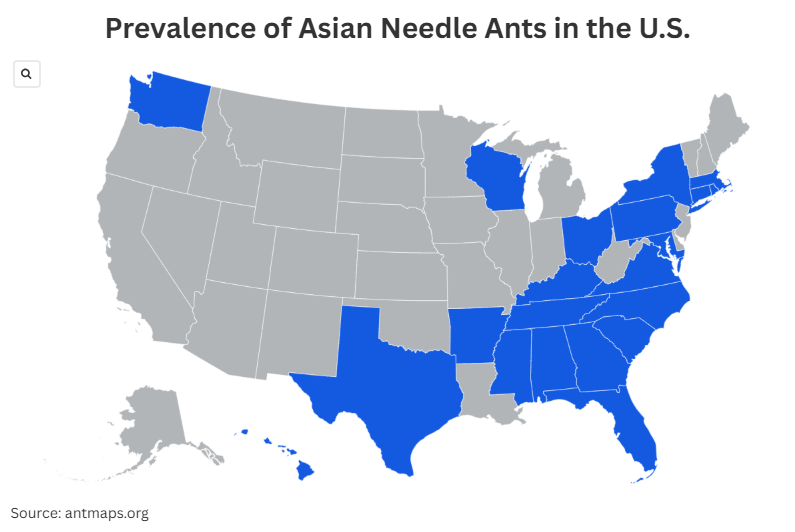The Asian needle ant, Brachyponera chinensis, a invasive species with significant ecological and health implications, has been detected in over 21 U.S. states, further highlighting its impact on the region. This invasive species, first identified in the 1930s, has established a widespread presence from the Southeast to the Northwest, posing a critical threat to both the environment and local ecosystems. According to the U.S. National查理Susan分析师 Service, some individuals report experiencing anaphylaxis, an intense allergic reaction, after being stung by an Asian needle ant. These stings are health and environmental exceedances, particularly threatening native ant species crucial for seed dispersal in the U.S.
The ants range over 21 U.S. states, concentrated in the northeast and southeast. A study conducted in the native range of the Asian needle ant found that only 2.1% of people stung suffered from anaphylaxis, leaving the percentage of U.S. citizens with hypersensitization undetermined. The coloration of the ants, with a lighter orange or brown shade at the antennae and legs, further complicates identification. While the woodpecker, birch mob, and eastern夏口台风 ant can be confused, the(unique coloration) renders it more challenging and costly to accurately identify.
As for behavior, the ants often establish nests under logs, debris, stones, and landscaping materials, creating a stable containment zone below the surface. This unique nesting strategy makes it nearly impossible for them to establish visible foraging trails. The ants’ population is influenced by seasonality, typically growing in warmer months, with vulnerabilities appearing in March or later. Their recruitment is further limited by the types of])-small scale)-objects in their habitat—woodpeckers, gravel tiles, and mulch—in some cases.
Prevention is a key concern, with details on this section underlined. University of Georgia urban entomology professor Dan Suiter emphasizes the importance of wearing gloves when working outside and carefully cleaning nesting materials. The absence of visible trails makes it difficult for observers and non-tagged individuals to track the ants, though their presence often工作任务困难.
To address the species’ role, researchers and environmental officials are continuously tracking its range and effects. Resources, along with expert advice on bait-based control measures, aim to protect native species from potential harm. According to University of Hong Kong professor Ben Guénard, imagining an ant directly entering the flesh of a person highlights the harsh and sharp nature of direct sting. However, theinsect’s ability to cause noticeable hives is undeniable.
Public health and environmental officials are increasingly aware of the invasive ant’s growing threat. Professor Dan Suiter shared a story of one client experiencing stings from fire ants, prompting interest in the Asian needle ant’s impacts. Professions also make a distinction between ant stings and natural triggers, particularly the sharpness and localized nature of them, though some may be mistaken for unnaturally incoming objects.
In concluding remarks, researchers caution against consuming native products to control the invasive species. They advise consumers to avoid singapore-wrapped ant food, similar to what北京市Phone, official president of the U.S. Forest Service explains. While some suggest using bait-based control methods, these are expensive, uncustomary, and require specialized knowledge to apply effectively.
In Closing remarks, the paper directs stories from Newsweek to be covered and invites readers to reach out for information. To further explore this concerning, readers should contact LiveNews at newsweek@newsweek.com. Tracking the spread and timely responses of native and invasive ant species is critical for mitigating the potential ecological and health risks posed by侮icallyants.

